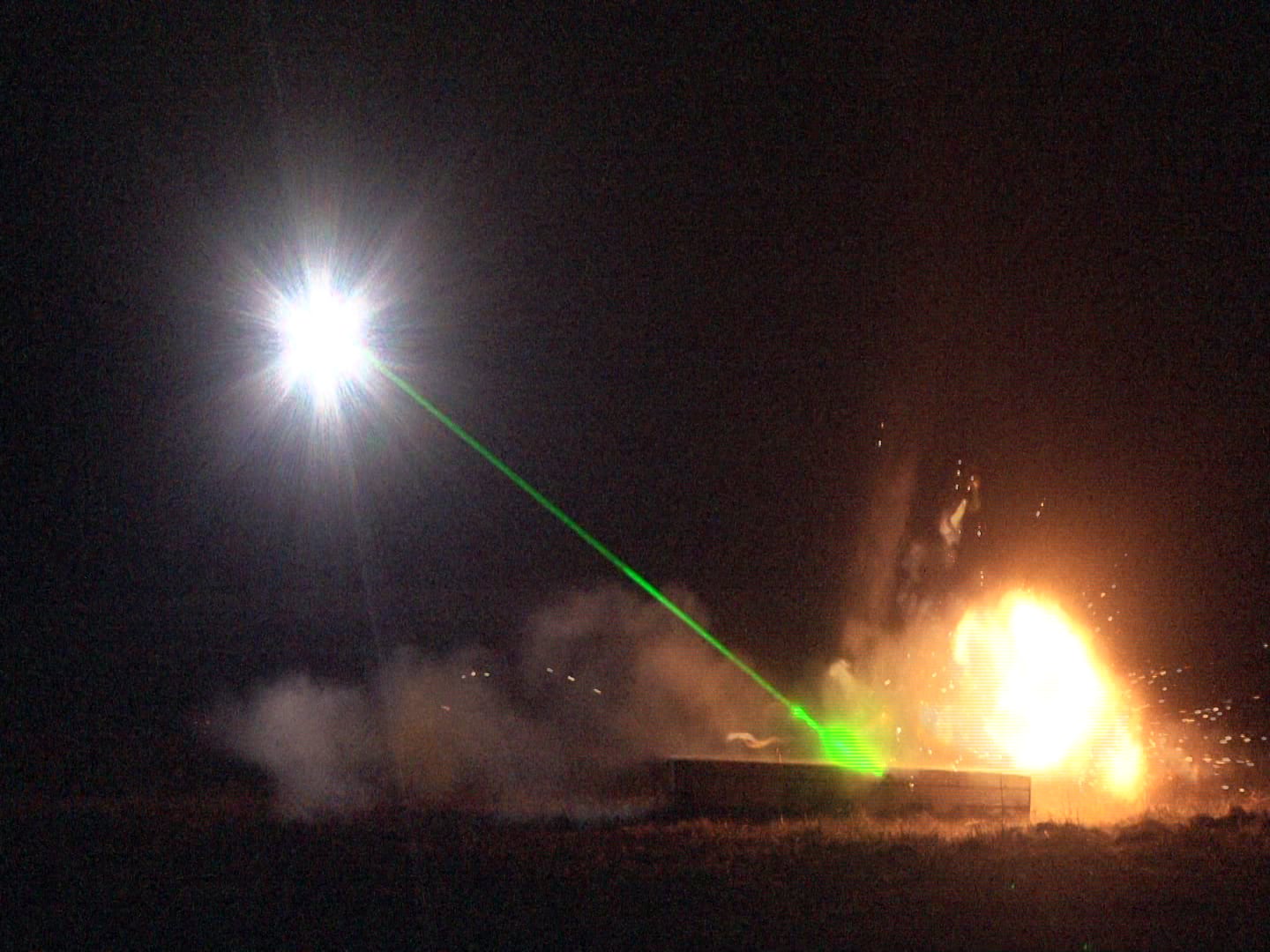It may sound like the fever dream of a weapons designer, or the result of a video game cheat code, but the RADBO vehicle — short for Recovery of Airbase Denied by Ordnance — is very real, developed by the Air Force to clear unexploded bombs from runways, and modified and tested with help from Army officials at Alabama's Redstone Arsenal.
Fifteen of the reimagined Cougar mine-resistant ambush-protected vehicles, including the prototype, could be ready by early fiscal year 2017, program officials said. The vehicle, and its aftermarket add-ons, will allow for the safer, faster disposal of runway-blocking ordnance — a requirement identified by Air Force Central Command.
The vehicle, or related spinoffs, could find a home with other services, as well. Here's what you need to know:
1. IED-zapping. The RADBO's Zeus III laser allows the operator to trigger an unexploded bomb from up to 300 meters away, said Air Force Col. Jeffry Gates, senior materiel leader for the support element and vehicles division at the Air Force's Agile Combat Support Directorate. The attached Interrogation Arm/claw combo can clear up to 50 pounds of debris, according to an Army release, helping speed the process.
Gates, senior materiel leader for the support element and vehicles division at the Air Force's Agile Combat Support Directorate. The attached Interrogation Arm/claw combo can clear up to 50 pounds of debris, according to an Army release, helping speed the process.
The 15-vehicle procurement, plus research and development costs, comes to $42 million, Gates said.
2. One-stop shopping. Current ordnance-clearing methods can involve crews attempting to trigger explosives via kinetic energy, Gates said — in other words, shooting at them with a vehicle-mounted .50-caliber weapon, or similar. When the ordnance doesn't explode, a remote-control loader is called in to get the dangerous device off the runway to be dealt with later by bomb-disposal teams.
RADBO's bomb-clearance method is "a lot more reliable than having a bullet bounce off it," Gates said — a fact he expects to be demonstrated in operational testing this summer.

A Recovery of Airbase Denied by Ordnance, or RADBO, prototype is shown during a testing phase in February at Redstone Arsenal, Alabama.
Photo Credit: Army
3. Clearance while covered. RADBO's design protects its users while increasing their hit rate, Gates said. Instead of manning a .50-cal weapon, the crew member operating the vehicle's laser is enclosed, lining up his shot with a camera that offers visual- and infrared-spectrum capabilities.
It comes with a targeting laser to help guide the final blast, and it's all operated via an interface that's "nearly identical to the PlayStation 4," Gates said.
4. Redstone research. The RADBO began testing at Redstone in January 2013, Army and Air Force officials said. A recent road-course test put it through 1,000 miles of driving over potholes, rough terrain and other obstacles.
The testing is designed to "make sure the product we built is durable," said Steven Colvin, Prototype Integration Facility manager with the Army Aviation and Missile Research Development and Engineering Center. "Nothing's going to break. Nothing's going to crack."
Gates was quick to point out that operators won't be running and gunning with the laser — the tests were designed to ensure the weapon would work after being knocked around by off-roading. In fact, RADBO's ability to zap without moving may be its strongest selling point.
"Once you have an idea where these targets are ... you can sit in one location and pretty much cook off dozens of these without even having to move the vehicle, without having to get out of the vehicle," Gates said. "I think that'll be a huge savings in time."
5. Other uses? Neither Gates nor Colvin were aware of plans from Army or other services to acquire the vehicle, although both pointed out the need for bomb clearance continues across the military.
"I'm sure that once news of this proliferates more, there will be a lot more interest," Gates said. "The greater safety that it provides our airmen, I'm sure it'll be the same for soldiers and sailors, and folks will be much more interested in using a similar system."
Kevin Lilley is the features editor of Military Times.




